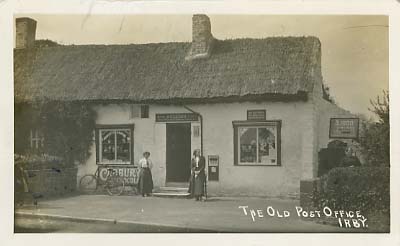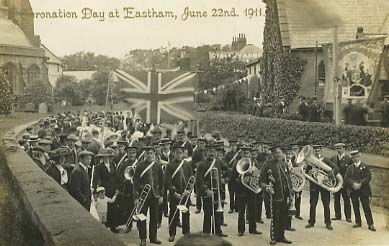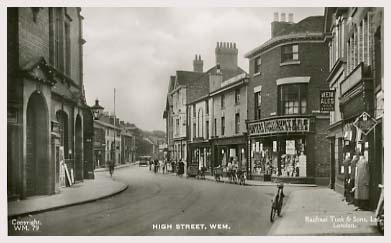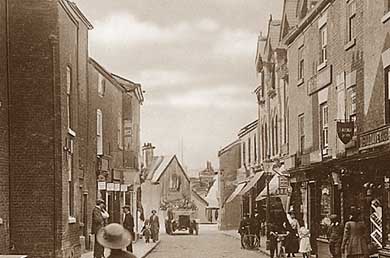POSTCARD TYPES : Real Photographic (RP)
a postcard produced on a true photographic paper - with conventional ink printed postcard back / reverseReal photo postcards can be divided into two distinct types:
'Local' photographers produced cards usually in small quantities produced individually by hand
Major publishers produced 'real photograph' cards by an automated machine process usually in much larger volume.
Purists often argue that 'Real Photographic' or RP cards are those printed by hand on photographic (silver halide) paper directly from the original negative and not the machine produced type of photographic postcards even though these are often described 'This is a Real Photograph' by the publisher.
Photographic paper manufacturers such as Kodak and Kentmere soon began to produce both standard and bespoke (pre printed for publisher) photo postcard blanks in this format.

Real Photographic Postcard c1910 ~
the title would have been written in mirror image using ink on the original negative
The immediate success of the real photo card meant that postcard production, previously the domain of traditional printing companies was opened up to photographers, both amateur and professional, and there is no doubt this fact aided the boom of postcards during the postcard during its Edwardian Golden Age.

Real photographic Postcard 1911
~the title here is applied in gold ink using a lettering kit

Enlarged detail of the postcard above shows continuous tones of the photographic image and
only slight degradation in quality when compared to a Printed Photo Postcard which would show
a 'grain' or halftone pattern.
Titles on Real Photographic cards were often written by hand in ink on the original negative this had to be done as a mirror image so was quite tricky. Later lettering kits became available for photographers these were used both on the negative or often in gold ink directly on the card.
Machine produced photographic cards
Produced on photgraphic paper from a duplicate negative in quantity by a mechanical process.
The common practice would be for an original photographic print to be embellished with a typeset title, logo, and would often be enhanced or retouched (the addition of clouds is quite common). The resulting print usually larger than a postcard in size would then be copied using a large format camera. The resultant negative, optimised for the purpose, would be loaded into a machine and the image repeatedly exposed onto a roll of photographic paper, the paper would be processed in photographic chemicals washed dried/glazed and eventually trimmed.

A machine produced 'Real Photograph' by Raphael Tuck c.1935
The original image has been enhanced to include clouds and typeset title added

Heavy retouching to the roofline and the artificial looking clouds in this section of card
are typical of a mass produced / machine made 'real photograph'
This type of card often has retouching, distant buildings may have chimneys and other features drawn on, clouds are often added, people and vehicles enhanced or crudely removed.
Any retouching will usually be more obvious using a magnifying glass, which will also show reveal good detail, though some image quality will have been lost due to the extra photographic processes involved in manufacture.
Many publishers mass produced real photo postcards in this way including
Valentines, Rotary, Tuck, W.H.Smith (Kingsway Series), Lilywhite, Friths of Reigate and Photochrom.
Though ideal for printing large numbers the process was also economical enough for incredibly short runs Lilywhites of Halifax, for example, advertised a bespoke service,which included short runs of less than 100.
